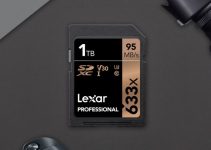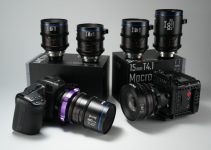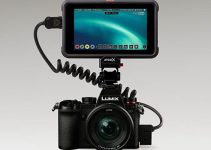Canon vs Canon sounds an awful lot like someone is getting a divorce. Rest assured there will be no character assassinations here today. When Canon released the EOS C200 in 2017 it was just as significant of a leap forward for a company as this year’s release of the EOS R5. The C200 was Canon’s first camera to shoot Raw internally, and the R5 can not only shoot that, but it can do it in 8K!
Often when we compare cameras, we are pitting two companies, two ecosystems, two very incomparable systems together using different lenses, codecs, color science, etc, etc. This comparison by Griffin Conway had me excited from the moment I heard about it since its finally all Canon.
Now we’re comparing two cameras with a similar cost that can serve the same market, use the same native lenses, and the same codec. Let’s see how these two amazing devices match up, and how they can work for you in your productions.
The key difference between the Canon C200 and the Canon R5 is their intended purpose. Canon made the C200 as a mid-tier cinema camera, a workhorse for a solo operator to film fantastic raw video and sound. It’s an all-in-one but it can’t shoot stills.
The R5 is a hybrid camera, a still photographer’s dream with video as a feature not totally as an intended function. It is very useful for both stills and video but it isn’t necessarily designed to be in a production environment.
Before we get into this breakdown, I should be totally honest and disclose the fact that I am a C200 owner and operator. I purchased the camera in 2017 and I absolutely love it. I still love it, and I will continue to use it for as long as I can.
It was Canon’s first camera to film in Cinema Raw Light (the main reason I picked one up), and now that Canon is releasing more and more CRL cameras, I’m excited to see how the images hold up.
Raw Image quality
The Canon C200 shoots in 4096 x 2160 4K DCI raw at up to 60fps, so obviously there is going to be a lot more detail in the raw images from the R5’s 8192 x 4320 8K DCI raw capture.
Zooming in, you can easily see a lot more detail in the footage from the R5 than you can in the C200.
Both are absolutely fantastic looking images, but before you declare the R5 the winner on resolution alone, have a look at the highlights.
Though it may only film in half the resolution, the C200 has much more information in the highlights than the R5. The dynamic range offered by this camera is roughly 1 to 2 stops higher than the R5 – which starts to clip when pushed.
The additional thing to consider here is the file sizes of the raw files produced by these cameras. The R5 is only capable of shooting in 8K raw at up to 30p, whereas, the C200 can film in 4k raw at 24 and 60p.
A 1TB card shoots roughly 130mins of raw on the C200. Those are big file sizes already but you can expect double that for R5 raw footage.
4k Compressed Image Quality
Canon held back on compressed 10 bit when it released the C200 to protect it’s higher end line, only allowing it to film in 8-bit 4:2:0. Sadly they’ve never made up for this oversight.
The R5 has the ability to shoot in 10 bit 4:2:2 in 8K and 4K, but as Griffin points out, that doesn’t translate to a huge quality difference on the screen. The C200’s compressed codec is still very professional and very good looking. If you’re not intending to color grade, you probably won’t even notice the difference.
The R5 also suffers from playback issues even on the most high-end Mac Pro because the H.265 4:2:2 codec is so new that most graphics processors weren’t designed to handle it. You’ll likely have to transcode your R5 footage before splicing it into the timeline.
120fps Slow Motion
The 4k 120fps mode on the R5 completely blows the C200’s HD 120fps out of the water. Not only does the R5 shoot twice the resolution with a much better codec than the C200, the R5 still allows you to use DPAF meaning your shots will stay perfectly in focus too.
In 3 years of owning the C200, I’ve never once used 120fps but it if looked as amazing as it does on the R5 I probably would use it all the time.
In Body Image Stabilization
There is no professional cinema camera that uses IBIS, and IBIS isn’t a feature of the C200. The C200 works well with an IS lens but it has absolutely no stabilization other than what is inherent with it’s ergonomics and weight.
The R5 has what I would consider to be industry leading IBIS that can work in tandem with lens IS and electronic stabilization giving you an absolutely smooth image.
When you couple that with the updated DPAF, the R5 allows you a lot more freedom to shoot without having to put all your attention on focusing and holding steady. This is a big win for the R5.
The only way to compare this feature to the C200 is to say that sometimes you don’t want IBIS, and IBIS can’t be turned off on the R5 – which could pose issues for some types of shooting.
Overheating
The Canon EOS R5 is (at this point) synonymous with overheating. I heard a rumor that Webster is going to put a picture of the R5 next to the word in their 2020 edition of the popular lexicon. *Just kidding.
Canon put the word out early on that the R5 can only shoot for 20 minutes straight in raw without overheating, and once it does, the recovery time is very significant.
The C200 doesn’t overheat. It could, technically, but it doesn’t. It has an active cooling system that keeps everything running at a consistent temperature even in harsh environments.
Conclusion
The images from the R5 are impressive. It really kills the C200 in raw resolution, frame rates, and DPAF. It has its place on a video shoot, but with the overheating issues it isn’t suitable to be an A camera in a professional production environment.
The C200 can work all day long without overheating, has built-in ND filters, uses cost-effective CFast Media (which you can also adapt to mSATA with a SolidPod or similar), has clean audio with built-in XLR inputs, and can handle the rigors of production. On top of that, the C200 has an edge over the R5 in dynamic range in every shooting mode.
Regardless of which one of these cameras you choose to shoot with, they’ll both capture stunning images for you. The IBIS and updated DPAF really have me wishing I had an R5 for myself to use as a B camera.
Griffin, your comparison was absolutely stellar. Thanks so much for putting these two cameras to the test.
[source: Griffin Conway]
Order Links:
Disclaimer: As an Amazon Associate partner and participant in B&H and Adorama Affiliate programmes, we earn a small comission from each purchase made through the affiliate links listed above at no additional cost to you.




